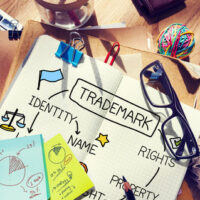Can You Protect Your Intellectual Property?

Part of having a business or brand is your colors, your logos, your saying and the other graphics and words which identify your business as your own. These things—often called intellectual property—can have a value in and of themselves.
In fact, in many cases businesses that are long defunct, often find that whoever owns the rights to their logos or pictures, can make money off of that intellectual property, simply because of their association for the original product.
Big Companies Often do a Bad Job of Protecting Their Logos
But you may be surprised how many large companies don’t do enough to protect their intellectual property, or else, they develop sayings or logos that are simply not legally allowed to be protected. Asking whether your product, logo, or branding can be protected is a vital question to ask when starting a business.
Jewelry maker Cartier ran into just this problem, with a piece of jewelry that celebrities often wear. The dispute involved what they called their bracelet that had a saying called “Love Gold” on it. A foreign country tried to copy the bracelet, putting the same saying on their jewelry.
But a foreign court in Singapore ruled that “love” was too generic, and thus “love gold” could not be legally protected. The Singapore court allowed the company to continue to use the saying on their products.
Cereal Cheerios once tried to protect its color, saying it was so closely associated with its products, that it should be protected. A court ruled that you cannot have intellectual property rights in just a color (although jewelry maker Tiffany’s did win protection for its signature blue color)
WalMart also learned the hard way that it would be impossible to trademark its smiley face, seen in many of its commercials. A simple smiley face is everywhere, and in the public domain, and thus, could not be protected.
A court recently ruled that a man could not trademark a chicken sandwich. He had sued, after he put a fried chicken patty on bread and made it into a sandwich while working for a large restaurant chain. The chain made millions selling the chicken sandwich, and the man sued.
But the court said that simply puttying chicken on a bun with vegetables, was not something protectable under the law. The Court went on to say that a recipe is not protectable under the law (note that although a recipe is not protectable, ingredients that make up a product, like a sauce, or a seasoning, can be).
Be Unique
The key to developing protectable intellectual property, is uniqueness, or originality. You don’t have to make up a new word, but the phrase or design should be something unique (Paris Hilton’s “That’s hot” was determined to have protection), and that is not seen or used by people already in the public.
If you have copyright, trademark or other intellectual property questions, we can help. Call the West Palm Beach trademark litigation attorneys at Pike & Lustig, LLP, at 561-291-8298.
Resources:
vox.com/the-goods/2019/1/3/18167244/cartier-love-bracelet-trademark-case
gawker.com/5648787/paris-hilton-owns-the-phrase-thats-hot-and-other-revelations-that-could-ruin-the-weather-channel
